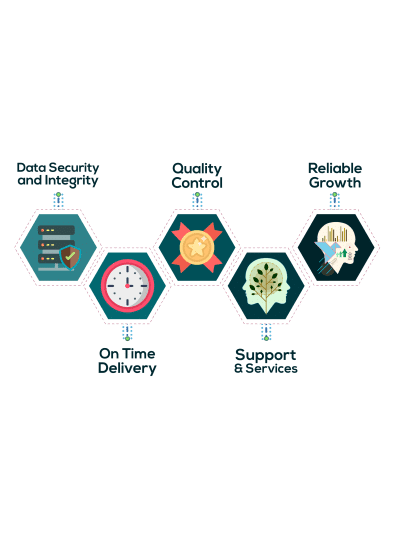
Secure Data Transfer Made Simple: A Guide for Beginners
In today’s digital age, transferring data securely is more critical than ever. Whether you’re sending sensitive personal information, confidential business documents, or any other type of valuable data, ensuring its safety as it moves from one place to another is paramount. However, for beginners, the complexities and technical jargon surrounding secure data transfer can be overwhelming. This guide aims to demystify the process, providing you with clear, straightforward steps to protect your data during transfer. By the end of this guide, you will have the knowledge and confidence to handle secure data transfers with ease.
Why is Secure Data Transfer Important?
Before diving into the specifics of secure data transfer, it’s essential to understand why it’s crucial. In short, secure data transfer ensures that your information remains confidential and protected from unauthorized access or modifications during its journey. Without proper security measures in place, sensitive data can be intercepted, stolen, or corrupted, leading to significant consequences for both individuals and organizations.
For individuals, a lack of secure data transfer can result in identity theft, financial loss, and invasion of privacy. On the other hand, businesses face even more significant risks if their data falls into the wrong hands. You need to learn more about MFT solutions for businesses. Modern managed file transfer (MFT) solutions offer advanced security features such as encryption, authentication, and access control to protect data during transfers.
Common Methods of Data Transfer
Before we discuss secure data transfer, let’s first understand the different methods commonly used to transfer data. The most common methods include:
Email: While sending files through email is convenient, there are more secure options. Emails can easily be intercepted and accessed by unauthorized individuals.
File-sharing Services: Services such as Dropbox, Google Drive, and OneDrive allow users to upload and share files with others. While these services offer some security measures, they are not foolproof.
Direct Transfer/FTP: This method involves transferring files directly from one computer/server to another using an FTP (File Transfer Protocol) client. While it may seem more secure, it requires technical knowledge and is susceptible to hacking.
How Does Secure Data Transfer Work?
Secure data transfer involves using various encryption methods and security protocols to protect data while it’s in transit. Encryption is the process of converting plain text into code, making it unreadable for anyone without the decryption key. This ensures that even if someone intercepts the data, they won’t be able to decipher its contents.
There are multiple types of encryption algorithms used in secure data transfer, with some common ones being AES (Advanced Encryption Standard), RSA (Rivest-Shamir-Adleman), and SSL (Secure Sockets Layer). These algorithms use complex mathematical equations and keys to encrypt and decrypt data securely.
Additionally, various security protocols, such as SSL/TLS (Transport Layer Security), are used to establish a secure connection between the sender and receiver, ensuring that data is not tampered with or intercepted during its journey.
Simple Steps for Secure Data Transfer
Now that you understand the importance and workings of secure data transfer, let’s discuss some simple steps to ensure your data remains protected.
Choose the Right File Transfer Protocol (FTP)—FTP is a standard protocol for transferring files between computers over the Internet. While there are many FTP options available, it’s essential to choose a secure one that uses encryption and security protocols.
Use Strong Passwords—Always use strong passwords when setting up accounts for data transfer. A strong password should be at least eight characters long and consist of a mix of uppercase and lowercase letters, numbers, and special characters.
Enable Two-Factor Authentication – For added security, consider enabling two-factor authentication for your data transfer accounts. This will require an extra code or confirmation from a second device to log in, making it more challenging for hackers to gain access.
Encrypt Your Data – Before transferring any sensitive information, make sure to encrypt it using a reliable encryption algorithm. This can be done through various software programs or online services.
Verify the Recipient’s Identity – If you’re sending data to someone else, always verify their identity before transferring anything sensitive. This can be done through a secure channel, such as a phone call or video conference.
Use Secure File Transfer Solutions – Consider using specialized secure file transfer solutions that offer end-to-end encryption and other security features for added protection during transfer.
Securing your data during transfer is crucial to protect yourself and your business from potential risks and consequences. By following the steps outlined in this guide and staying informed about the latest security measures, you can ensure that your data remains safe while moving from one place to another. Remember, it’s always better to be cautious and take necessary precautions than to risk losing valuable information. Stay safe and secure out there. While technology continues to evolve and new threats emerge, the fundamentals of secure data transfer remain the same.




